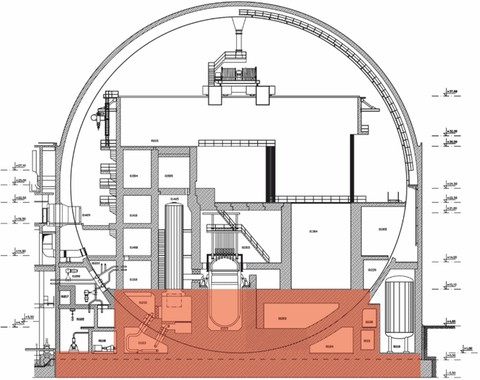KOBEKA
KOBEKA Development of measurement technology for sampling contaminated concrete structures of nuclear facilities during dismantling
| Project Manager: | Prof. Dr.-Ing. habil. Antonio Hurtado |
|
Contributor: |
|
| Duration: | 01/09/2021 - 31/08/2024 |
|
Funding: |
BMBF: Federal Ministry of Education and Research |
| Funding Code: | 15S9434A |
| Cooperations: |
|
BRIEF DESCRIPTION

Fig. 1: Schematic diagram for the calotte of the KKS nuclear power plant
During sampling of the concrete structures of the reactor building at the Stade nuclear power plant (KKS), contamination was found in the lower part of the containment (calotte, Fig. 1). The lack of detailed knowledge about the distribution of contamination makes dismantling more difficult, time-consuming, and costly.
In principle, contamination can be determined selectively by core drilling. However, lack of accessibility, structural boundary conditions and costs limit the number of sampling boreholes. An alternative are boreholes with minimal borehole diameters, which can be set without endangering the structural design. However, there is then also a lack of drill cores for analysis. Therefore, new measurement and sensor techniques for sampling full boreholes would be developed in the project. Such an in-situ measurement technique would simplify sampling considerably because all the necessary data would be generated on site during sampling and laboratory analysis would no longer be necessary. The planned project is developing a scientific-technical solution approach for this. Four professorships of the TU Dresden, two industrial companies and an environmental and decommissioning organization are working on the solution of these tasks.
At the Chair of Hydrogen and Nuclear Energy, an in-situ sampling probe is being constructed and tested to ablate concrete material by means of a laser beam. The ablated material is removed and subsequently analyzed by spectral analysis. This is to characterize the local composition of concrete and to determine whether contaminated particles are present.

